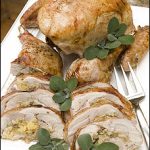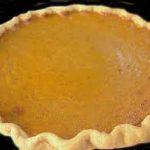
As some of you may already know, Hostess Brands, Inc., the company who makes Twinkies, Ding Dongs, Sno Balls, and other popular baked goods, filed for bankruptcy protection on January 11 of this year. Finally on Friday, November 16, after striking workers refused to return to work, company officials decided to seek the court’s permission […]

Deep-Fried Twinkies are a fun food found at just about every county and state fair in America.

You might even like these little filled cakes better than the popular commercial brand. This would make a great supervised project for the kids.

No, it’s not a cake that tastes like a Twinkie. It’s a cake made out of Twinkies! If it sounds perfectly sinful, it’s because it is.

The only thing more patriotic than making this is sharing it with your fellow Americans.

You might want to bust out the good china for this one. Tastes great on paper plates too.

For most people, the mention of Thanksgiving brings to mind visions of roasted turkey filled with stuffing, pumpkin pie, family get-togethers, football, and young schoolchildren acting out stories of the Pilgrims sharing the first feast with native Indians . But was that day of feasting at Plymouth really the first Thanksgiving in this country? Let’s […]

This recipe for retro Sorgham Candy with Peanuts comes from the Brimley Estate in McKinney, Texas and date back to 1987.

This Peanut brittle is a delicious treat, perfect for the holidays or anytime you need to satify your sweet tooth.

In the early seventeenth century, sweet sorghum was introduced into America as an alternative to sugar cane in the upper South and Midwest. First brought here by African slaves, sorghum cane thrived in hot, arid conditions and was soon grown by farmers in the Carolinas and as far west as Texas and far north as […]

Preparing your Thanksgiving turkey in this manner is, without a doubt, a time consuming project, but will worth the effort.

This classic recipe has been on LIBBY’S® Pumpkin labels since 1950.

This no-fail corn casserole recipe is so easy and versatile.

Grapette BBQ sauce was made in-house and used exclusively at the famous Shack barbeque near the capital in downtown Little Rock, Arkansas.

So simple and easy and yet so delicious. You’ve got to try it.

















